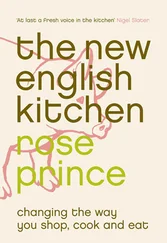Health, nutrition and functional food
In the past twenty years obesity rates in the UK have trebled, to 20 per cent of adults and 10 per cent of children. The food industry is – rightly – under fire for manufacturing and promoting unhealthy food. The industry responds by saying that, if we all took more exercise, it would not matter that we consume too many fats and sugars. I predict that the industry will wish it had not ignored its responsibility for so long. Some food manufacturers are reducing fat, salt and sugar content in the food they make; a time may even come when we laugh at the way we gave children sugar-coated breakfast cereals, in the same way our parents giggle at how their GP once offered a cigarette during a consultation. The authorities are trying to catch up on the situation, again far too late. The Food Standards Agency’s suggested proposal of a red –amber–green ‘Traffic Light’ warning logo on food was trounced in early 2006 by the announcement that some of the biggest players in the industry plan voluntarily to change the nutritional information on their packaging, giving the RDA (recommended daily allowance) of each particular food. That the daily allowance of any particular food will be decided by the manufacturer is laughable – but it could also be seriously confusing to the consumer.
It may be true that all food is nourishment to a degree, but what we put in our bodies is now a major preoccupation. The food industry – no slouch when it comes to fashion – has responded with ‘functional foods’, foods with added beneficial ingredients, such as pro-biotic yoghurt drinks (said to aid digestion) and chickens with added essential omega-3 fatty acids (for heart and tissue health). Before you throw these things in the trolley, bear in mind that, unlike those made by pharmaceutical companies or even herbal remedies, the health claims on food labelling need not be backed up. The functional food industry is also expecting that these rules will be relaxed further in the near future. Take omega-3: there is no doubt that these fatty acids are heart-healthy, but I’m sorry to say that there is just not enough evidence to prove they boost brain power except in premature babies. The food industry is set to make billions out of gullibility. Nutritionists all say the same thing: stick to eating, or feeding your kids, a varied diet made up of fresh foods, freshly cooked.
Try to picture one and a half billion dustbins full of waste, inside them 12 billion carrier bags, at least one billion emblazoned with the names of our major supermarkets. Add to this a few billion glass jars, bottles and cans that missed the recycling bin. And then imagine burying the whole lot. Choose a spot. The Lake District? The Norfolk Broads? The Wiltshire Downs? It has to go somewhere and much of it, sad to say, is the debris of our dinners.
Waste Watch, a government-funded agency, reports that 28 million tonnes of waste are generated by UK households annually, of which only 11 per cent is recycled; 81 per cent is dumped in landfill sites and space is running out without more recycling. The government has said that the food and drink industry is a major source of waste, accounting for 10 per cent of all industrial and commercial waste, ‘notably packaging’.
The figures for recycled waste have gone up encouragingly but there is still a problem with packaging. Most irritating is the pass-the-parcel package: cardboard cartons containing 12 boxes of cellophane-wrapped biscuits are typical. Chocolate packaging can be outrageous. Have you ever scrabbled desperately through cellophane wrapping and a triple-thickness cardboard box, then removed a sticker from a waxed paper layer to reveal another of corrugated paper, under which 12 chocolates are sitting, wrapped in foil? Some suppliers use recycled, biodegradable packaging, but less is better. Brown paper bags are a great wrapping for vegetables and fruit, newsprint good for meat and fish and, if you shop by car, it is good to take boxes from supermarkets, not carrier bags. Or use baskets. Feel superior at the checkout, putting your hand up to say ‘no’ to the carrier bag.
Building the Savvy Shopper directory
There is a shopping guide for each food featured in this book. Many of the suppliers were found when I was writing the Savvy Shopper articles for the Daily Telegraph in 2004–5 but I have also found many new sources of good food that you can buy with a clear conscience. There isn’t room to feature every food, and taste is a subjective thing, so feedback from readers and suggestions for any future updates are most welcome.
I should add that I live in the south of England, so there will be a disproportionate number of suppliers from that region in the directory. Many of them, however, offer home delivery services and will bring the shopping to your door, wherever you live. Telephone numbers are provided so that each supplier can be contacted for information about stockists and mail order.
Many of the food producers included in this book can do home delivery; if home delivery isn’t mentioned, contact them for details of stockists. I have not been able to include every small food shop on every high street, or farm shop in the countryside – but do keep an eye out for good independent shops. Nothing is more welcome to a shopper than a shop filled with good food, beautifully kept, run by knowledgeable assistants who are sympathetic to the needs of the shopper. With the creeping dominance of the chain retailers, these shops – and all those other food producers selling food with real integrity – need your loyalty and support. So be a savvy shopper and decide what the future of food shopping should be. There is considerable power in your wallet; put it to the best possible use.
HOW TO SHOP FOR BRITISH FOOD IN SEASON
UK-grown vegetables and fruit
New breeds, modern storage and the wider (and controversial) use of polytunnels and glasshouses mean that the season for UK-grown produce is now greatly extended. British tomatoes, for example, are available from February onwards. Supermarkets sometimes stock UK produce in preference to imports (e.g. apples, strawberries and raspberries) but unless they can buy in large quantities throughout the whole UK season for a particular vegetable or fruit, they tend to source imports, which are often cheaper. For this reason there is more chance of buying a wider variety of UK-grown produce through ‘box schemes’, which are more economical if bought direct from the farm where they are grown. Best value is to be had during the ‘glut’ – the natural window when outdoor-grown produce peaks and is at its most abundant.
There is an optimum time to buy fish and shellfish, namely outside the spawning period of each species. This gives the fish a chance to reproduce and reduces the catch of egg-bound females. But a seasonal approach is not all a shopper needs to adopt when buying fish. Always choose large, mature fish and ask the fishmonger about the catch method: ‘line caught’ is preferable to trawled, for example. Fish from UK inshore fisheries, which tend to fish for shorter periods in smaller boats by more sustainable means, are the best choice.
The season for game birds is short, but take advantage. Some species, such as grouse and woodcock, are rare and expensive but during the height of the pheasant shooting season there is a glut well worth buying into. Other, naturally wild game such as rabbit and wood pigeon are available fresh for most of the year. Wild venison has ‘close’ seasons when it can be shot but not sold; these differ between Scotland and England and Wales. The open seasons are marked on the chart that follows.
Читать дальше












